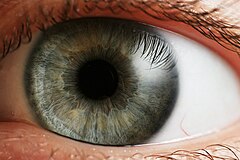Difference between revisions of "AY Honors/Home Nursing/Answer Key"
| Line 22: | Line 22: | ||
A ''full diet'' is also sometimes referred to as a ''general diet''. It includes all food items, including drinks. | A ''full diet'' is also sometimes referred to as a ''general diet''. It includes all food items, including drinks. | ||
| − | ==3. Know the symptoms of a fever. Know how to take person's temperature. Know how to bring a high temperature | + | ==3. Know the symptoms of a fever. Know how to take person's temperature. Know how to bring a high temperature DOWN.== |
| + | |||
==4. Know what is a normal pulse rate, respiration rate, and temperature. Practice taking the pulse rate, respiration rate, and temperature of a friend or classmate.== | ==4. Know what is a normal pulse rate, respiration rate, and temperature. Practice taking the pulse rate, respiration rate, and temperature of a friend or classmate.== | ||
Revision as of 01:13, 14 February 2008
1. Have the First Aid Honor.
2. What foods are included in the following diets:
a. Liquid
- Creamed or clear soup
- Any drink following the criteria below.
- Pudding
- Jello
For a food to be classified as liquid, it would have to be able to be strained when heated. For example, tapioca pudding would not qualify, but a milkshake without pieces of fruit or other foods would qualify.
b. Soft
c. Light
This diet is culturally diverse, and includes the following:
- Food that is easy to digest.
- Not spicy
d. Full
A full diet is also sometimes referred to as a general diet. It includes all food items, including drinks.
3. Know the symptoms of a fever. Know how to take person's temperature. Know how to bring a high temperature DOWN.
4. Know what is a normal pulse rate, respiration rate, and temperature. Practice taking the pulse rate, respiration rate, and temperature of a friend or classmate.
5. What is a communicable disease? How is it transmitted? What precautions should be followed to guard against communicable diseases? List safety measures to be observed when caring for a person with a communicable disease in the home.
6. What symptoms tell you that a person is physically ill?
7. Know how to help take care of a newborn and an aged person in your home.
8. Know when and how to wash your hands when caring for a sick person.
9. Know how to make a bedridden patient comfortable in bed.
Use a draw sheet or a piece of cloth under the patient if available, so they can be turned and pulled up in bed with more ease, preventing friction on their skin.
Make sure the person is aligned properly, especially when on their back.
Turn the patient every 2 hours during the day and at least 1 to 2 times during the night if possible.
Prop the patient up prior to eating and a half hour afterwards if possible. Otherwise turn the patient on their left side to eat if able.
Using a pillow between the knees while the patient is on his side can help prevent skin break down or creating a twist in the spine.
Have the patient by a window if possible or not contraindicated.
Have the things a patient can use within reach if applicable.
Provide an atmosphere conducive to the patient's and families needs if possible. Example, some people do better being in the middle of the daily activities or they may need a quiet place.
Provide adequate nutrition and fluids if applicable.
Keep the patient clean.
Be respective of the patient's dignity.
10. Show how to feed a helpless patient in bed.
11. Show how to give liquid medicine and tablets, pills, or capsules to children and adults. Know how to properly apply eye drops.
Administering Medicines
Applying Eye Drops
- Instruct your patient of the procedure as appropriate.
- The head of your patient should be tipped back. Gently pull down on the skin below the eye and apply the drop in the pocket formed below the eyeball without touching the dropper on the patient. Then gently apply pressure at the tear duct area with your finger when the patient closes their eye. Instruct the patient not the squeeze their eye shut tight.
12. Demonstrate the method of giving fomentations and foot baths. Explain the value of their use and tell the conditions under which such treatments should be given.
13. Demonstrate the application of a heating compress and the use of heat and cold for the treatment of inflammation and bruises.
14. Explain how the following natural remedies help in preventing disease: Note how the first letter of each item spells NEW START.
- a. Nutrition
- b. Exercise
- c. Water
- d. Sunshine
- e. Temperance
- f. Air
- g. Rest
- h. Trust in God

